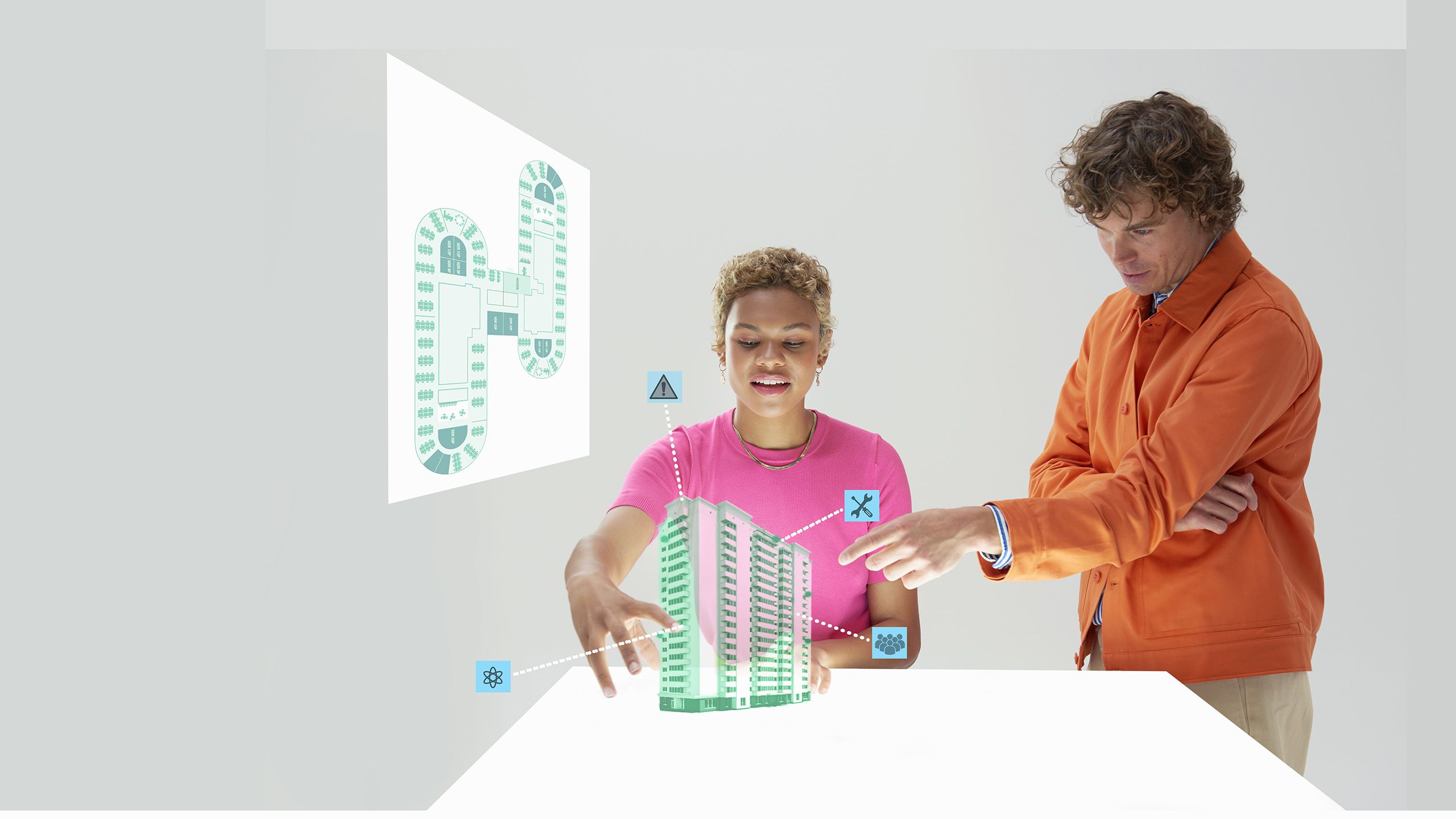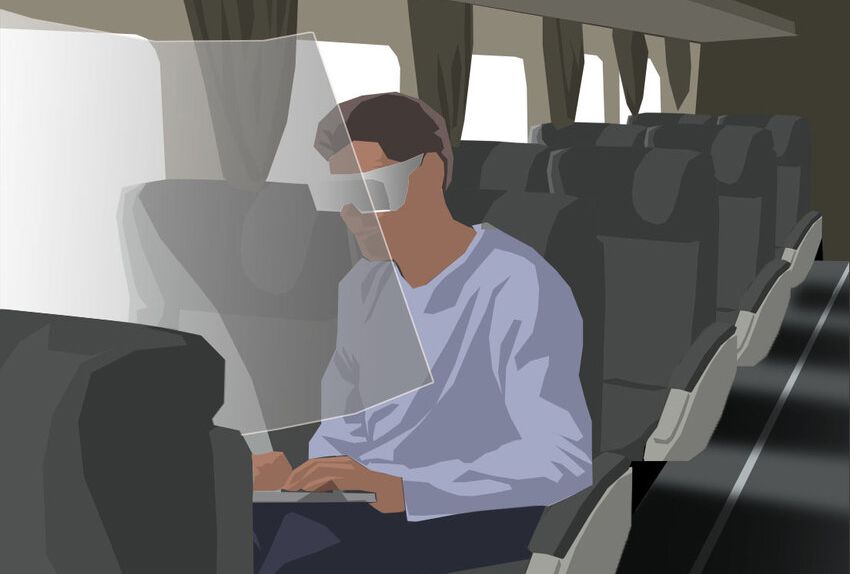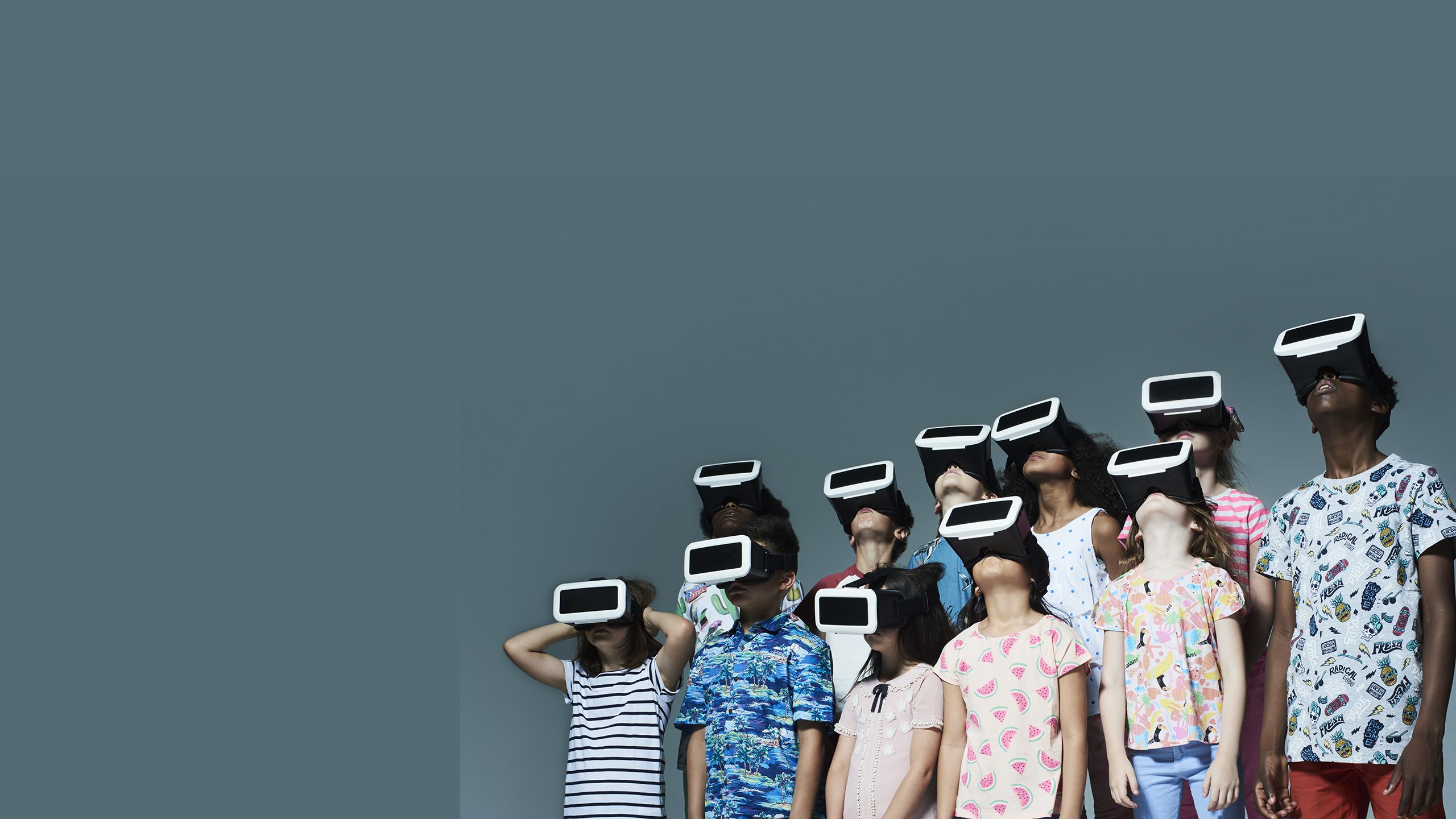What is the metaverse?
And will it help us or harm us?

An interconnected world of extended reality is coming that will reshape how we work, play and communicate. It will transform education, healthcare and industry – and expose us to new levels of risk. What is the metaverse? Will we be safe? How do we make the most of it?
Put simply the metaverse could be described as the next phase of progression for the internet.
It's a vision for a network of digital worlds through which we will navigate seamlessly using virtual reality (VR) and augmented reality (AR) devices to connect with others.
In the metaverse, you might take a class personalised to your educational needs, acquire job skills in an immersive environment or visit a virtual pharmacy to get advice. You might also use it to collaborate, socialise, game, work, exercise, morph into an exotic animal, or teleport to a virtual Jupiter.
It’s not a new concept – the word was first coined by Neal Stephenson in 1992 in his novel Snow Crash to describe an alternative 3D connected reality.
But the ideas that are shaping the metaverse are now emerging fast as Big Tech companies like Meta, Microsoft and Apple invest hundreds of billions of dollars to bring about its future. Last month, Apple unveiled a new and much-anticipated AR headset, Apple Vision Pro, which “seamlessly blends the real world and the virtual world” and is the company’s biggest product launch for almost a decade.
However, some have cautioned that this digital realm could see data-harvesting reach alarming new heights.
We ask: what is the metaverse? How will it change how we work? And what risks should be addressed before it’s too late to prevent them?
EXTENDING REALITY

“We think of the metaverse as a merging of virtual, augmented and physical reality so that we can engage in the digital world as in the physical world,” says Per Ola Kristensson, Cambridge’s Professor of Interactive Systems Engineering. “These are all examples of extending the reality of our world.”
At one end of the spectrum is VR and the kinds of digital worlds already seen in massively multiplayer online games like Second Life, Minecraft, Fortnite and Roblox. In these environments, your digital image, or avatar, can connect, explore and experience virtual spaces with others who are not physically present.
These could be considered “proto-metaverse” technologies and their uptake is huge, says tech entrepreneur Sam Gilbert, an affiliated researcher at the Bennett Institute for Public Policy.
“Take Roblox, a platform which allows users to programme and play online games. In the UK, there are already 9.4 million active Roblox players. In the USA, a staggering 75% of children aged 9 to 12 regularly use the platform.”
At the other end of the spectrum is AR in which devices like smart glasses overlay information on your view of the real world.
While some of these technologies are already in use, others like mixed reality blending of digital holograms with physical spaces have yet to be fully realised. “Currently, truly optical see-through art, where you see digital holograms in front of you, is very difficult to manufacture reliably with the right field of view,” explains Kristensson.
Crucially, the ambition is for all of these digital and real spaces to be ‘interoperable’, meaning we will be able to move seamlessly across experiences and devices, enabled by services and environments that share information and continue to exist when we’re not there.
So how soon will this new world be a part of our lives?
“I would give a time frame of 5–10 years,” says Dr Matteo Zallio, from Cambridge Engineering Design Centre, who helps organisations to navigate ambiguous challenges for designing inclusive and ethical VR and extended reality (XR) experiences.
“With the internet now influencing 50 to 70% of our daily routines and approximately 86% of the global population owning smartphones, it’s evident how rapidly technology has become an integral part of our lives.
“Consider Apple’s Vision Pro glasses, which offer a seamless integration of computer content right into your eyewear. With simple hand gestures, you can effortlessly zoom in or pinch to close a window. The existing technology exemplifies the potential that lies ahead, and undoubtedly, this field will continue to evolve swiftly.”
WORKING IN THE
METAVERSE

Per Ola Kristensson sees huge opportunities for developing the virtual office in the metaverse – and it’s long overdue, he says.
“Despite the takeup of new hardware like smartphones and tablets, very little has changed in the traditional workstation setup of laptop, keyboard, mouse and switching between applications – and all of this might take place in a physical environment that’s cramped or noisy,” says Kristensson.
“What if you could create the working environment of your choice as a large virtual office and access it wherever you go using portable standard input devices and immersive head-mounted displays?”
Kristensson’s particular focus has been the building of machine learning systems that allow workers to use “mixed reality” to create presentations, work with spreadsheets, type text and design 3D models. His work in collaboration with Microsoft explores how these systems can help workers to be more efficient and expressive when unconstrained by the physicality of their usual desk set-up.

A vision of a portable virtual office enabled by VR (credit: P.O. Kristensson)
A vision of a portable virtual office enabled by VR (credit: P.O. Kristensson)
Of course not everyone will desire, or be able to, take advantage of the metaverse – and concerns have been raised that this will further widen a digital divide that was exacerbated in the COVID-19 pandemic by inequitable access to the internet.
But Kristensson believes the metaverse will also open up new opportunities to people who are marginalised by disability.
He is exploring how the metaverse could introduce life-changing benefits for people at any age with any loss in capability – vision, hearing, mobility, dexterity and/or mental health – in collaboration with the Royal National Institute of Blind People, Meta and the University of Reading, with funding from the Engineering and Physical Sciences Research Council.
Meanwhile, Sam Gilbert has been exploring the political economy of the metaverse and speculates that the shift to working in the virtual world could turn the tables for young people who have been the worst affected by the disruption COVID has caused to the job market.
“Young people have already demonstrated a competitive edge in the virtual workplace. They come equipped with a more intuitive grasp of digital technology and the initiative to troubleshoot problems via YouTube tutorials, social media and subreddits. As a generation, they’re also bigger gamers.
“The metaverse will no doubt see organisations creating persistent virtual reality workplace environments, in which employees can interact in real time as embodied avatars,” he adds. “Virtual versions of office spaces can be designed to encourage chance encounters and corridor chats: recreating the elusive ‘watercooler moments’ we’ve lost in the pandemic.”
WILL WE BE SAFE
FROM HARM?

“Embracing the possibilities of new, paradigm-shifting technologies like those in the metaverse requires acknowledging that they may come with some costs. However, these potential costs signify the immense potential and impact these technologies can bring, propelling us into an exciting future,” highlights Zallio, who has published a report setting out 10 principles for how organisations can design an ethical, inclusive and safe VR and XR environments (metaverse).
His report, funded by the European Union, is based on a qualitative study conducted with experts from some of the industries currently shaping the future of digital immersive environments (including Google, Meta, Panasonic and HTC). He has also launched the Metavethics Institute, a not-for-profit thinktank of researchers, industry leaders and policymakers to develop best practices for the metaverse.
As we begin to spend more time in the metaverse, the devices we use to interact in VR and AR will also be sharing our intimate information: facial expressions, where we are looking and for how long, gestures, body movement, heart rate, the content we choose to create using generative AI.
“The breadth and intimacy of the personal information that will be collected will be unlike anything we’ve seen yet in another consumer-grade device,” says Shannon Pierson.
“VR and AR headsets collect extensive biometric and motion data to facilitate convincing, interactive simulations and virtual environments.
“However, these data streams can indicate medical conditions, sexual orientation, and identify an individual out of tens of thousands of others.”
Pierson is a digital threat investigator and affiliated researcher at the Minderoo Centre for Technology & Democracy in Cambridge, and has previously worked with Microsoft and Meta. She believes there’s an urgent need for questions to be asked about privacy.
“Policymakers should not assume that the Big Tech industry will voluntarily adopt trusted norms that prioritise the safety and privacy of users. It is vital that regulators be proactive in addressing XR technologies now, rather than waiting for these harms to affect users en masse.
“Can companies preserve user privacy in the metaverse? Can users reasonably consent to the persistent tracking and monetisation of their involuntary biometric responses throughout gameplay? These are the questions lawmakers need to consider.”
Concerned that few guardrails are in place to ensure that these technologies progress responsibly, Pierson has just published a report, Securing the Metaverse: addressing harms in extended reality, that assesses the possible harms of the metaverse and suggests policy recommendations to mitigate them.
She calls on lawmakers to expand the definition in the UK’s Online Safety Bill for what qualifies as ‘content’ with respect to XR and for a re-evaluation of privacy, security and consumer protection laws to apply to the metaverse.
Pierson recommends adopting ‘privacy by design’, meaning that companies minimise data collection to only what is necessary, process and store data on-device for minimal amounts of time, and restrict the data companies share with third-parties.
“Ultimately, it’s in the company’s own benefit to prioritise user safety and security as it improves user experience, builds brand trust, and encourages users to spend more time on platform,” says Pierson. “But there needs to be clarification between industry and government on what makes a safe metaverse.”
“If left unaddressed, problems such as tracking of sensitive biometric data will become entrenched into metaverse infrastructure and business models in ways that will be difficult to untangle.”
Nevertheless, Pierson is very hopeful about this technology.
“I am excited by the future of this technology, especially in the areas of immersive learning and healthcare,” she says. “Immersive learning applications of XR will provide adaptive learning experiences tailored to the student, which will no doubt help students with learning disabilities. I am also optimistic about how it will be used by healthcare practitioners to provide patients better treatment and health education.”
Meet the experts

Per Ola Kristensson
Engineer working on intelligent interactive systems and human-inspired AI

Sam Gilbert
Entrepreneur and researcher working at the intersection of politics and technology

Shannon Pierson
Digital threat investigator exploring the impact of digital technologies on society


Published 27 July 2023
Written by Louise Walsh
Banner images in order of appearance:
Character with VR goggles: credit AntonioSolano/Getty Images
Gesturing as if in extended reality: credit We Are/Getty Images
Manipulating a virtual model: credit We Are/Getty Images
Children wearing VR headsets: credit Flashpop/Getty Images
The text in this work is licensed under a Creative Commons Attribution-NonCommercial-ShareAlike 4.0 International License